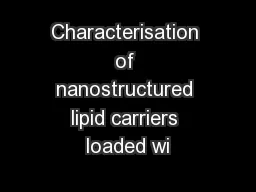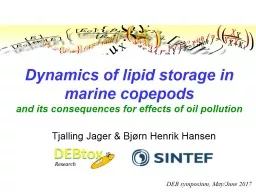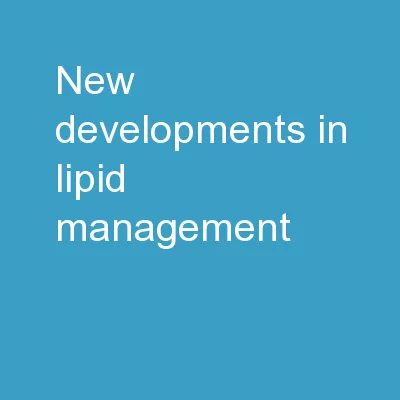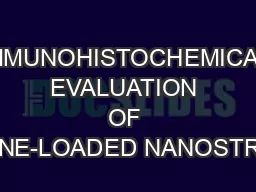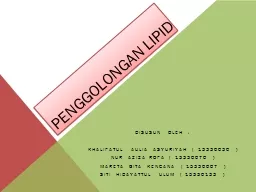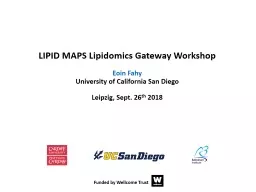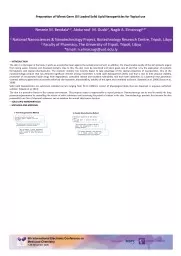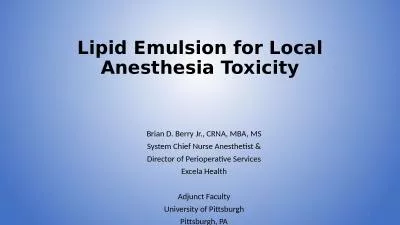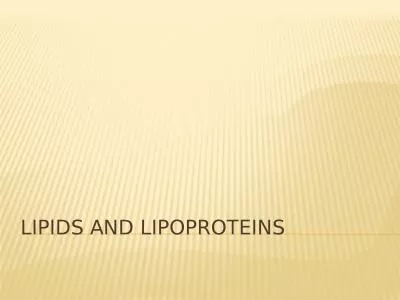PPT-Characterisation of nanostructured lipid carriers loaded wi
Author : pasty-toler | Published Date : 2016-11-01
I buprofen Blanka Sütő Mária BudaiSzűcs Péter Sipos Erzsébet Csányi Piroska Szabó Révész Szilvia Berkó Department of Pharmaceutical Technology
Presentation Embed Code
Download Presentation
Download Presentation The PPT/PDF document "Characterisation of nanostructured lipid..." is the property of its rightful owner. Permission is granted to download and print the materials on this website for personal, non-commercial use only, and to display it on your personal computer provided you do not modify the materials and that you retain all copyright notices contained in the materials. By downloading content from our website, you accept the terms of this agreement.
Characterisation of nanostructured lipid carriers loaded wi: Transcript
Download Rules Of Document
"Characterisation of nanostructured lipid carriers loaded wi"The content belongs to its owner. You may download and print it for personal use, without modification, and keep all copyright notices. By downloading, you agree to these terms.
Related Documents

